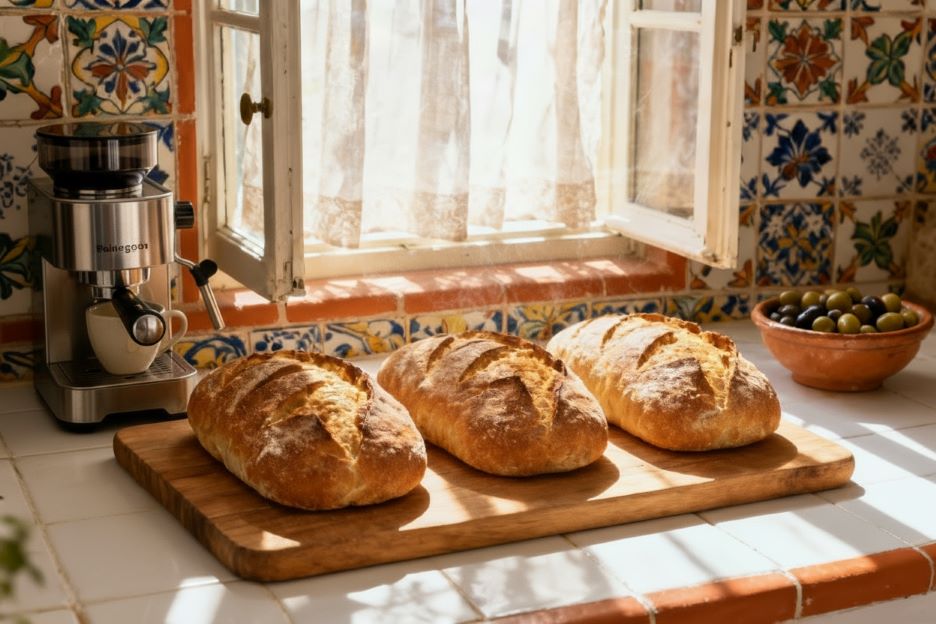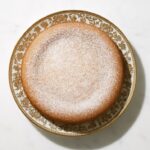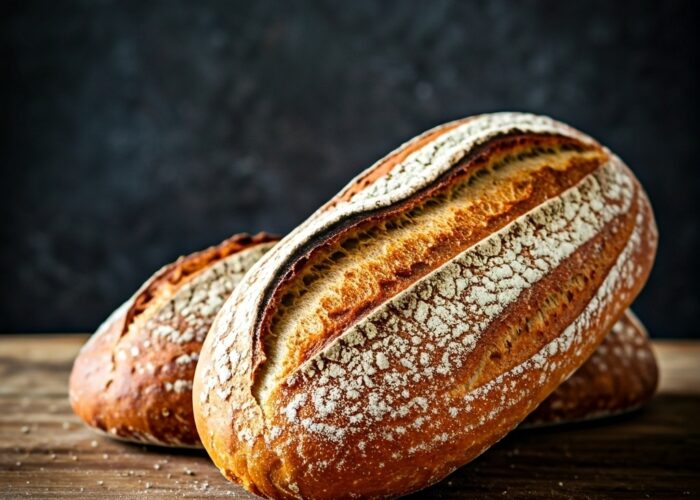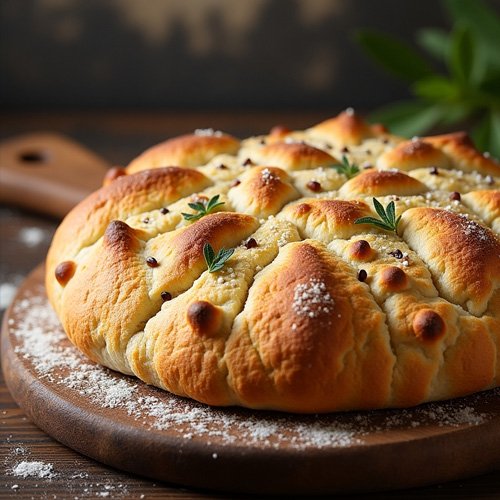Fresh Italian Filone
Unlike the sleek, refined baguette born in 19th-century Paris, the Italian Filone bread has humbler, older roots—stretching deep into the rural heartlands of central and northern Italy. In regions like Tuscany, where bread is as essential as olive oil and wine, loaves were traditionally baked to endure—dense, crusty, and built to last through days of meals. Traditional rustic Italian Filone bread from Tuscany with dense, crusty loaves rooted in rural heritage
Long before modern bakeries, Italian families in the countryside would bake these elongated loaves in wood-fired ovens, sometimes only once a week. The shape made them easy to slice, the thick crust kept them from going stale too quickly, and the flavor deepened with time—perfect for dipping into brothy soups or soaking up a rich tomato sauce.
Over generations, this practical farmhouse bread evolved into what we now know as Filone: a lean, rustic loaf with a chewy crumb and golden crust. While its core identity remained, each region shaped it slightly to suit local tastes—some added olive oil, others dusted it with semolina, and in every case, it remained the go-to bread for everyday meals, from bruschetta at breakfast to panini at lunch.
Italian Filone bread
The name Filone comes from the Italian word “filo,” meaning “thread” or “line,” a nod to the bread’s elongated, streamlined shape. At first glance, it may remind you of the French baguette—but make no mistake, Filone is no imitation. This distinctly Italian loaf boasts a heartier crumb and a rustic crust often dusted with flour or semolina, giving it an artisanal, countryside character.
Traditionally crafted from a lean dough—just flour, water, salt, and yeast—Filone is simplicity at its best. In some regions, bakers enrich the dough with a touch of olive oil, adding a delicate softness and flavor that reflects the Mediterranean pantry. The result is a versatile, everyday bread with a chewy interior and a golden, crackling crust.
In a country where food is both tradition and art, Filone holds a special place among Italy’s many regional breads. Whether served with olive oil, used for panini, or paired with soups and cured meats, it captures the soul of Italian baking—rustic, honest, and deeply rooted in centuries of culinary heritage.
A Taste of Italy in Your Kitchen
If you’re a home baker looking for your next project, Filone is the perfect blend of simplicity and charm. All you need is flour, water, salt, and yeast, though if you want to take it a step further, a splash of olive oil or a pre-ferment like biga can add depth and complexity. The dough is typically lean, meaning there’s no fat or sugar, which makes the crust beautifully crisp and the crumb delightfully chewy.

The process doesn’t require fancy techniques, but it does reward a bit of patience. Many bakers prefer to let the dough rest overnight, allowing the flavors to fully develop and the gluten to relax. The result? A golden, flour-dusted loaf with a hearty crust perfect for dipping into olive oil, piling with fresh tomatoes and basil, or simply tearing apart while it’s still warm.
Bringing Filone into your home baking routine isn’t just about making bread, it’s about experiencing a slice of Italian culture, shaped by generations and passed down through rustic kitchens and communal ovens.
Filone and a Baguette would be a hybrid loaf that combines the elegant lightness and shape of a French baguette with the rustic texture and hearty character of an Italian Filone.
Storage
Short-term (1–2 days):
Store the bread at room temperature in a paper bag or wrapped loosely in a clean kitchen towel. This helps maintain the crust’s crispness while keeping the inside soft.
Avoid plastic bags for fresh bread as they trap moisture and soften the crust.
Medium-term (up to 1 week):
Slice the bread and store it in an airtight container or plastic bag in the refrigerator to slow mold growth, but note this may slightly dry out the bread.
Long-term (up to 3 months):
Wrap the whole loaf or individual slices tightly in plastic wrap or aluminum foil, then place them in a freezer-safe bag. Freeze for later use.
To refresh frozen bread:
Thaw at room temperature, then warm it in a 180°C (350°F) oven for 5–10 minutes to restore crust crispness.













